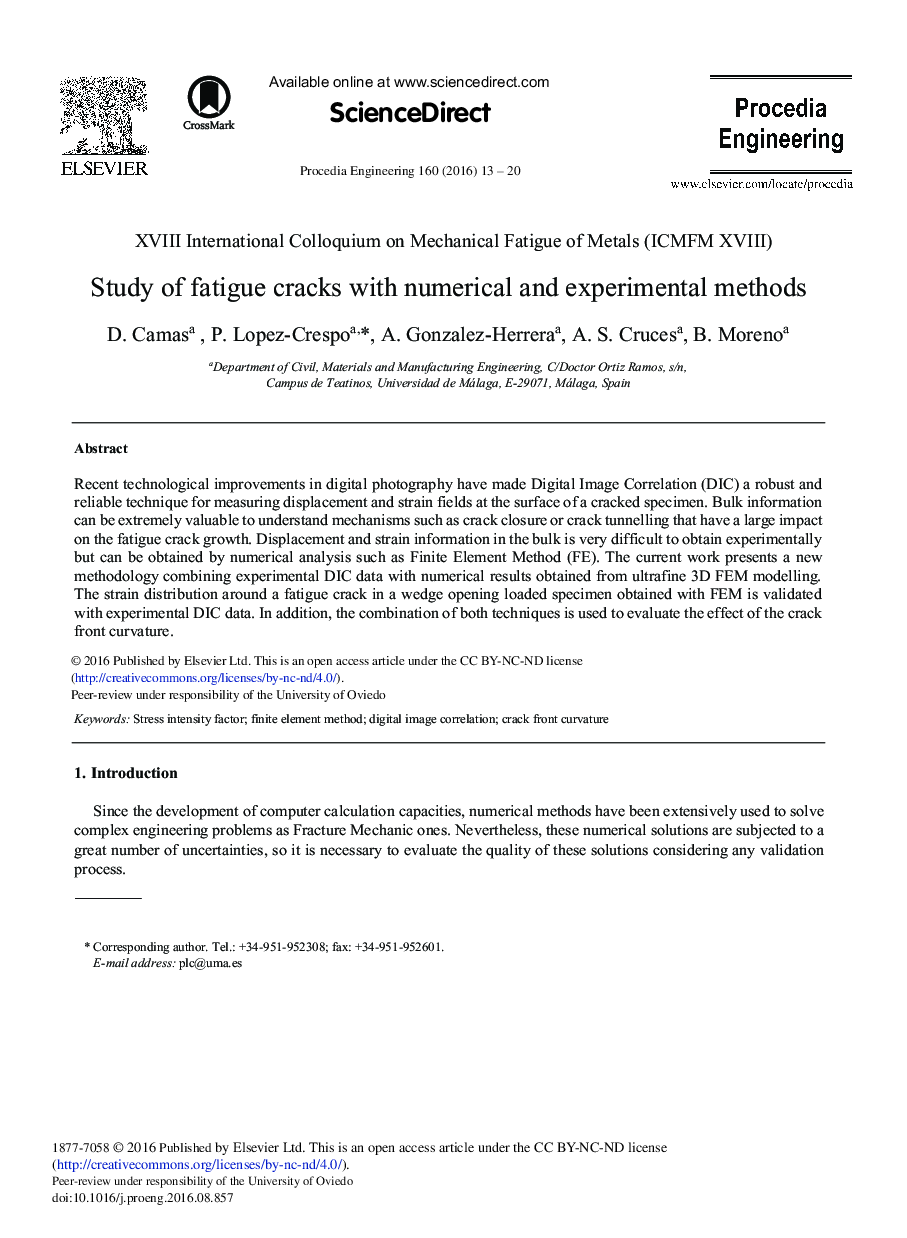| Article ID | Journal | Published Year | Pages | File Type |
|---|---|---|---|---|
| 5029407 | Procedia Engineering | 2016 | 8 Pages |
Abstract
Recent technological improvements in digital photography have made Digital Image Correlation (DIC) a robust and reliable technique for measuring displacement and strain fields at the surface of a cracked specimen. Bulk information can be extremely valuable to understand mechanisms such as crack closure or crack tunnelling that have a large impact on the fatigue crack growth. Displacement and strain information in the bulk is very difficult to obtain experimentally but can be obtained by numerical analysis such as Finite Element Method (FE). The current work presents a new methodology combining experimental DIC data with numerical results obtained from ultrafine 3D FEM modelling. The strain distribution around a fatigue crack in a wedge opening loaded specimen obtained with FEM is validated with experimental DIC data. In addition, the combination of both techniques is used to evaluate the effect of the crack front curvature.
Related Topics
Physical Sciences and Engineering
Engineering
Engineering (General)
Authors
D. Camas, P. Lopez-Crespo, A. Gonzalez-Herrera, A.S. Cruces, B. Moreno,
